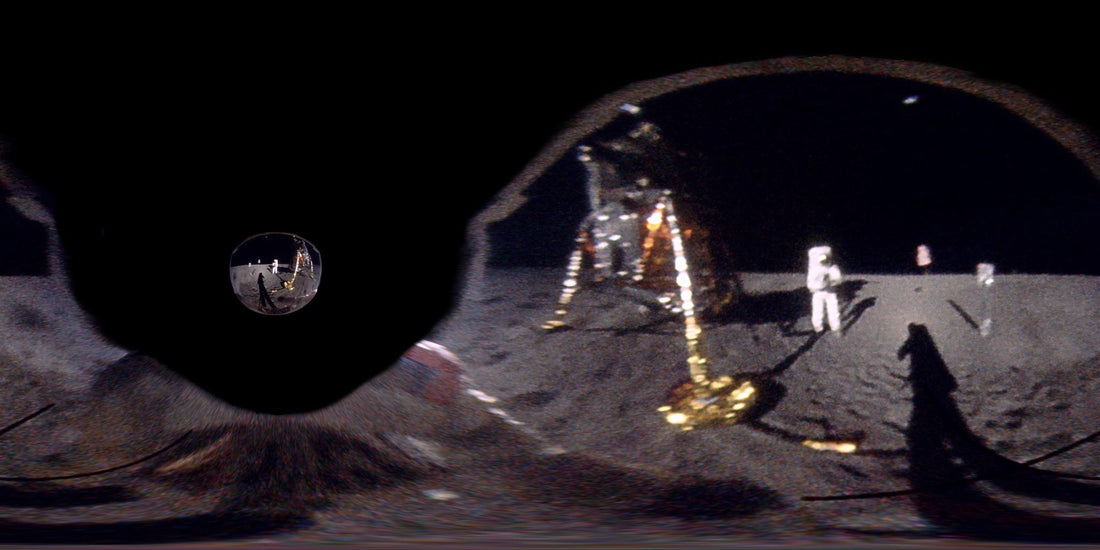
VFX Artist Real Data To Show Us What Buzz Aldrin Seen on the Moon, And It's Not Bad
Share
A classic photo from the Apollo-era gets a fresh perspective 52 years after the first historical Moon landing.
Michael Ranger, AKA rg1213, chose the iconic Buzz Aldrin photo taken by Neil Armstrong during the Apollo 11 mission, and unwrapped the lunar vista reflected in the astronaut's helmet.
The result is a 360-degree view of the Moon like you've never seen it before. Because you’ve never been to the moon before...
"What makes this process exciting for me is the fact that this is real," Ranger wrote on Reddit. "If I get any inkling whatsoever that something like this is fake or false, my interest in it completely evaporates. This is great because it's real!"

This photo was taken in July of 1969, and is an iconic one. Aldrin stands next to the leg of the Eagle moon module with his left arm cocked. He can see his shadow on his visor, his module shines in the harsh light of the unfiltered Sun, and he's holding a Hasselblad camera at chest height.
Look at the top of the visor and you'll see Earth.
Ranger's reconstruction follows a previous attempt in February of 2019, and an earlier version from a few days ago using a lower resolution photo.
"I took this famous image of Buzz Aldrin on the Moon, zoomed in to his visor, and because it's essentially a mirror ball I was able to 'unwrap' it to this 2D image. Then I opened that in the Google Street View app and can see what [Aldrin] saw," he explained.
From the comprehensive Project Apollo Archive on Flickr, the latest version uses the highest resolution image.
"Using that higher quality photo, I created this unwrapped panoramic 360-degree image, which I opened in a free 360-degree viewer and recorded this video with it," Ranger wrote. "In addition to the higher resolution of the film scan and the uncompressed file format, I sharpened and color corrected it in Photoshop rather than on my iPhone like the first one, which led to better results."
Aside from color correction, he added more space around the edges of the visor for a more realistic representation of the inside of Aldrin's helmet.
Armstrong and Aldrin landed on the Moon on 20 July 1969 during the Apollo 11 mission, the first time humans had set foot on a planet other than Earth. There are a number of photographic and video assets that have been preserved and are in the public domain.
Using artificial intelligence, a film restoration specialist enhanced some Apollo 11 mission footage last year, bringing it to 24 frames per second for an incredible, crisp and clear view of iconic mission moments.
Ranger will not be the last to attempt this, either. According to the comment thread, other Reddit users have been inspired to find hidden views in Apollo photographs.
Should we find and share more of this type of content?
Let us know in the comments and help thrust Australia into the deep unknown…
#Space_Aus




